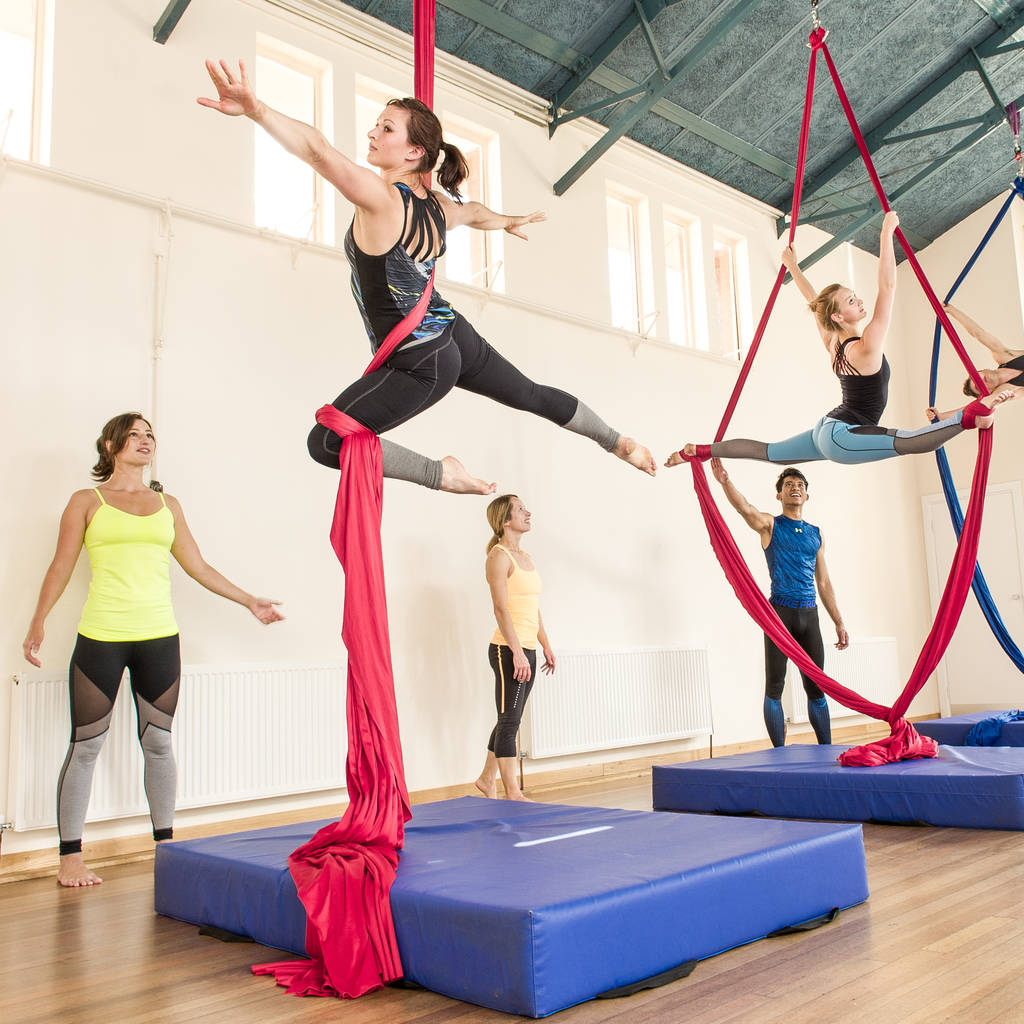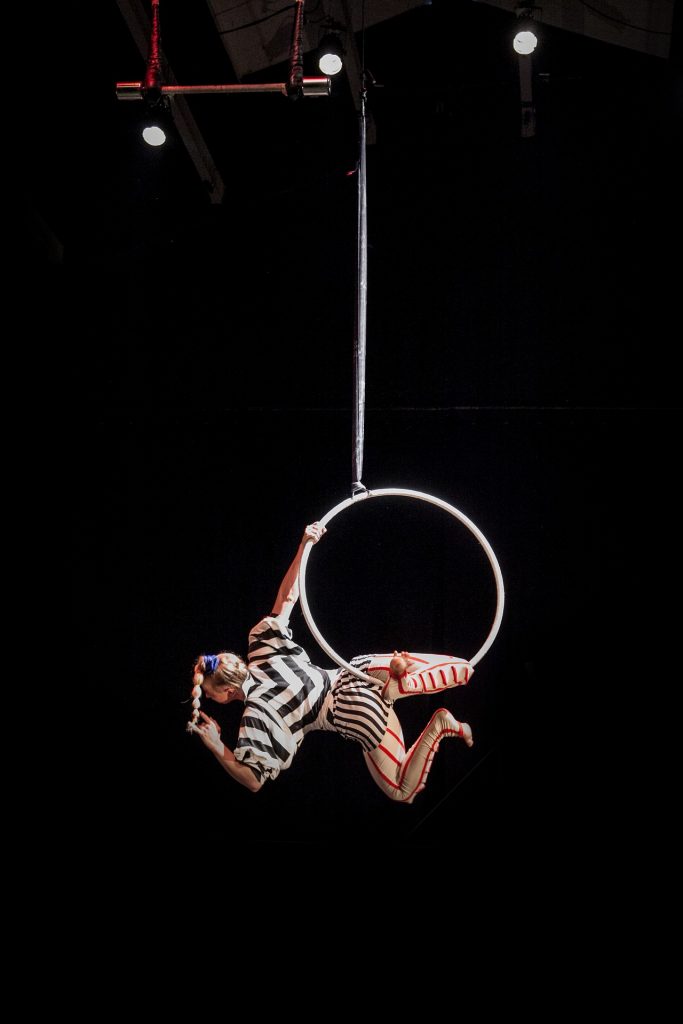Aerial workouts have become some of the latest fitness crazes in the last few years. Two of the most popular of these are aerial silk and aerial hoops classes. If you are unsure which of these to enroll in, here are some useful info on these two to help you decide.
Going to aerial hoops classes
The aerial hoop is metal ring suspended from the ceiling of an exercise hall. To use the apparatus, practitioners climb onto it and perform different acrobatic movements. The ring may be static or free to move, allowing for a great variety of movements.

Aerial hoops basics
When enrolling to aerial hoops classes, look into the kinds of hoops they offer. Aluminum hoops are lighter than steel and easier to control. You can also go with either a solid or hollow ring. Hollow rings are easier to spin and are preferable for beginners. On the other hand, solid hoops spin longer, letting you do more complex exercises.
The tabs that suspend the hoop to the ceiling also gives you an idea of how it would be used. Singe-tabbed hoops are designed to spin and swing in more than one direction, resulting in more dynamic moves. Double-tabbed hoops, meanwhile, hang from two points and moves more like a swing, making them great for beginners.
Aerial hoop exercises
While they might seem difficult, the routines taught in aerial hoops classes are made up of simple exercises. Some of these are:
- Hand hang: A fundamental move where you hang from the hoop with your hands. This requires a good grip and upper body strength.
- Leg hang: This is the opposite, where you suspend your body from your legs. It helps you develop your lower body strength.
- Closed Delilah: A combination pose where you hang from one hand and leg. The move requires some bit of flexibility to get into position.
- Seat: There is a variety of basic seating poses you can do on the hoop. These let you transition from one routine to the next.
- Candlestick: A move where you wrap your legs around the hoop while being suspended with either one or both arms.
You will encounter these routines in your first week of classes. Note that the actual set of basic moves taught varies from class to class. Once you get used to them, your instructor will teach you how to string these together into routines.
Aerial silk classes
What will surely fascinate first-time aerial silk class attendees is the fact that you do all the routines while hanging from a piece of cloth. The unique equipment creates an engaging workout for practitioners.

Aerial silk basics
The fabric used for aerial silk comes in different varieties. Low-stretch fabrics are primarily designed for beginners who have yet to master climbing. They are also fairly long, going past the ground when suspended. This lets you learn the various wraps and tricks at a safer height.
As you progress, you transition into using medium-stretch fabric. This lets you perform more complicated drops and maneuvers. It also gets progressively shorter, letting you perform higher off the ground and giving more freedom of movement.
Aerial silk moves
There are three different categories you will learn when doing aerial silk classes, namely:
- Climbs: These range from practical moves for getting up the fabric to more artistic ones which show off the performer’s athleticism.
- Wraps: These are static poses where you wrap the fabric around your body. Certain wraps will even let you suspend your body mid-air without the aid of your hands.
- Drops: These are transition moves where you let your body free fall from one position to the next. Drops are the most difficult category since you need to control your descent.
These three main categories have several more subcategories which you will learn throughout your sessions. Another major part of aerial silk classes is learning how to transition from one move to another in a more graceful manner.
Aerial hoop vs. aerial silk: Which classes to join
When deciding which of the two aerial arts to sign up for, your biggest concern will likely be the level of difficulty. Many practitioners consider the hoop easier, mainly due to it having simpler maneuvers. With silks, you have to memorize more complex routines to avoid getting tied up on the fabric.
On the other hand, hoops can be a bit more dangerous for first-timers. Since you only have the ring to grip on, you can easily slip. With silks, you can tie the fabric to yourself to provide additional support. Beginner silk training is also usually done at a lower height. You might also find yourself bruised more often on the hoop because of the hard surface.
Despite their different methods, aerial hoops and aerial silks offer the same benefits, including:
- Toned arms and core: The routines for both require a good amount of arm and abdominal strength to get you up in the air, which will result in a toned upper body.
- Greater flexibility: The routines might look difficult to execute at first. But as you become more accustomed to them, you also develop the flexibility needed to pull them off.
- Better body circulation: Different studies have found out that aerial routines help improve your blood circulation and decompress your spine. It can also serve as a stress reliever.
With all the benefits they offer, each would definitely be worth the effort. You can even do both aerial silk and aerial hoops classes since they use almost the same principles. Go and sign up for your classes. They will be a fun way to get the workout you need.

